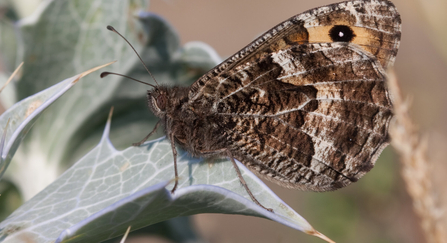Whilst walking on a heathland you may see some small brown butterflies jostling around. You may dismiss them as dull or boring, but little may you know this is an incredibly rare species, a red listed species, the Grayling (Hipparchia semele).
This butterfly has suffered massive declines in recent years and has sought out shelter on our coasts or heathlands. In Surrey it has found refuge on our magnificent lowland heath habitats, and this is why we need you.
Working in partnership with the Heathland Connections project, we want to survey Graylings with citizen scientists, to help us understand their distribution and potentially allow us to find suitable new habitats or connect existing habitats together.
Since 1976 the Grayling has declined by 72%, not as huge a decline as other species like the Nightingale have endured, but still a staggering figure. Graylings suffer from populations becoming isolated and if we do not start to connect some habitats or improve them, populations will head to extinction quickly.


